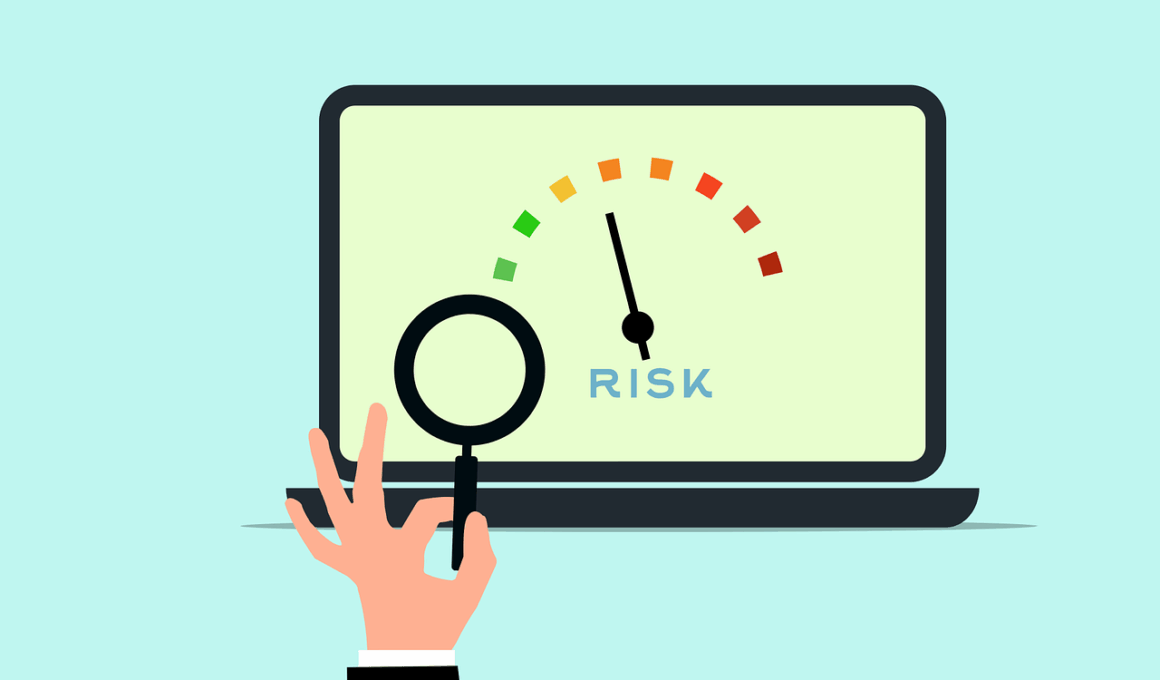The Role of Employee Awareness in Mitigating Financial Risks
Financial risks are increasingly becoming a significant concern for organizations worldwide. One of the most effective ways to mitigate these risks is through employee training and awareness programs. Employees play a crucial role in identifying potential financial threats, as they often are the first responders to any discrepancies. Awareness programs can equip them with the necessary skills to identify unusual activities or fraudulent actions. Regular training also helps in building a culture of accountability where employees feel responsible for the financial health of the organization. Companies should create tailored programs that address specific risks relevant to their operations. Incorporating case studies during training can provide real-world context, enhancing employee understanding. Employees trained to recognize risks can act promptly, flagging issues before they escalate into major problems. In addition to formal training, organizations should ensure that open communication channels exist. Encouraging employees to report suspicious activity fosters a proactive environment. Future-oriented companies recognize that the real value in employee training lies in ongoing development, adapting to changing financial landscapes. Creating a robust training framework can ultimately save organizations from costly financial pitfalls.
Importance of Continuous Training
Continuous training in finance is vital for keeping employees informed of the latest risks and strategies to mitigate them. The financial landscape evolves rapidly, with new regulations, technologies, and market conditions arising regularly. Consequently, employees need to stay up-to-date through ongoing training sessions and updated materials. Regular workshops can help keep awareness high and reinforce the importance of financial vigilance. A well-informed workforce is better equipped to handle challenging situations and make prudent decisions. Moreover, continuous education allows for the incorporation of emerging trends, such as cybersecurity threats and digital currency risks, into the training programs. Employees who understand these risks are more aware of their responsibilities, significantly lowering the potential for financial missteps. Online resources and webinars can supplement in-person training, making it accessible for all employees. Organizations can cultivate a culture where staying informed becomes a priority. Furthermore, support from leadership is essential; management participation in training emphasizes its importance. In summary, the ongoing adaptability and responsiveness of training programs can empower employees to mitigate financial risks effectively. Investing in continuous learning ultimately safeguards the organization’s financial standing.
Incorporating a gamified approach to training can significantly enhance employee engagement and retention of crucial information. Gamification involves using game-like elements, such as point systems and leaderboards, to make training more interactive. By transforming risk awareness training into a more engaging experience, employees are likelier to absorb and recall information. For example, creating scenarios where employees must identify financial risks can foster both fun and effective learning. Learning through this method can lead to improved participation in discussions about risks. It also promotes teamwork as employees strategize together. Furthermore, successful engagement in gamified training may lead employees to take ownership of risk management processes. Organizations can assess employee performance in real time, enabling them to identify areas needing more focus. By utilizing gamification techniques, companies tap into the natural competitive spirit of employees, making risk awareness training memorable. Regularly updating the training materials and scenarios keeps the content fresh, ensuring employees continuously learn. Ultimately, innovative training methods can better empower employees to mitigate financial risks, leading to enhanced vigilance and accountability in the workplace.
An essential aspect of effective risk management is fostering a transparent reporting culture. Employees must feel confident in voicing their concerns regarding financial discrepancies. This transparency plays a vital role in minimizing risks, as it allows organizations to address potential issues proactively. Training programs should emphasize the importance of reporting and equip employees with the knowledge of reporting procedures. Employees should understand that reporting suspicious activities is part of their responsibilities, and they should feel secure doing so without fear of repercussions. Encouraging open discourse around financial risks can help employees feel more connected to the organization’s goals. Organizations can also establish anonymous reporting channels to provide employees with an additional sense of security when raising concerns. Collecting and acting on employee feedback can improve training programs and organizational responses to financial risks. By integrating feedback loops into financial risk management systems, companies can identify emerging threats sooner. A transparent reporting culture enhances collaboration and fosters a sense of shared responsibility among employees. Ultimately, this cultural shift can significantly mitigate financial risks while strengthening overall organizational resilience in the face of challenges.
The Impact of Leadership on Employee Training
Leadership plays a crucial role in the effectiveness of employee training and awareness initiatives. When management prioritizes and actively participates in risk training programs, their influence reverberates throughout the organization. Leadership sets the tone for the importance of financial awareness and risk mitigation, fostering a culture that values vigilance. By being involved in training sessions, leaders can share personal experiences and emphasize the significance of identifying potential risks. Such engagement not only magnifies the training’s importance but also positively influences employee morale. Also, providing team leaders with the resources necessary to conduct training empowers them to tailor sessions effectively. Regular updates to training content according to the latest financial practices can create a robust framework for ongoing learning. Recognizing and rewarding employees who exhibit proactive risk management behavior can further reinforce the value placed on training initiatives. Leadership commitment to training translates to an organization-wide commitment to financial health and integrity. In conclusion, investing in leadership involvement in training investments proves essential in creating a more risk-aware workforce, ultimately making financial management a shared organizational responsibility.
Measuring the effectiveness of risk training programs is crucial for continued improvement and accountability. Organizations must implement metrics that provide insight into the success of training initiatives. Surveys, quizzes, and assessments can gauge employee understanding and retention of the material. Conducting assessments before and after training sessions can reveal knowledge gaps, allowing trainers to adjust future content accordingly. A combination of qualitative and quantitative measures ensures a comprehensive evaluation of training effectiveness. Furthermore, tracking the incidence of reported risks can help organizations gauge if increased awareness translates to reduced financial discrepancies. Regularly reviewing and updating training materials based on employee feedback and changing market conditions can enhance program relevance. Additionally, showcasing success stories can inspire employees and demonstrate the value of risk awareness training. Involving employees in the evaluation process fosters greater accountability and commitment to the training initiatives. By aligning training evaluations with organizational goals, companies can ensure that risk management becomes a core competency. Ultimately, the continuous measurement and enhancement of training programs can lead to increased efficacy in mitigating financial risks and promoting a culture of vigilance.
In summary, employee awareness is pivotal in mitigating financial risks within organizations. Comprehensive training programs increase vigilance and empower employees to identify potential threats. Additionally, fostering a culture of transparency and reporting enhances overall organizational responsibility for financial health. Leadership involvement in training significantly impacts employee engagement and establishes the importance of this initiative across all levels. Furthermore, employing innovative methods, such as gamification and continuous assessments, can make training more appealing and effective. Continuous adaptation of training materials ensures relevance and addresses emerging risks effectively. The ultimate goal is to create an organization where every employee understands their role in managing financial risks, leading to enhanced overall resilience. Financial sustainability hinges on a workforce equipped to navigate complex risk landscapes confidently. Investing in people ultimately pays dividends in safeguarding the organization’s financial integrity. As companies strive for growth in a competitive landscape, prioritizing risk management training becomes a non-negotiable element of success. Therefore, cultivating a knowledgeable, engaged workforce is crucial for thriving in the ever-changing financial environment.


